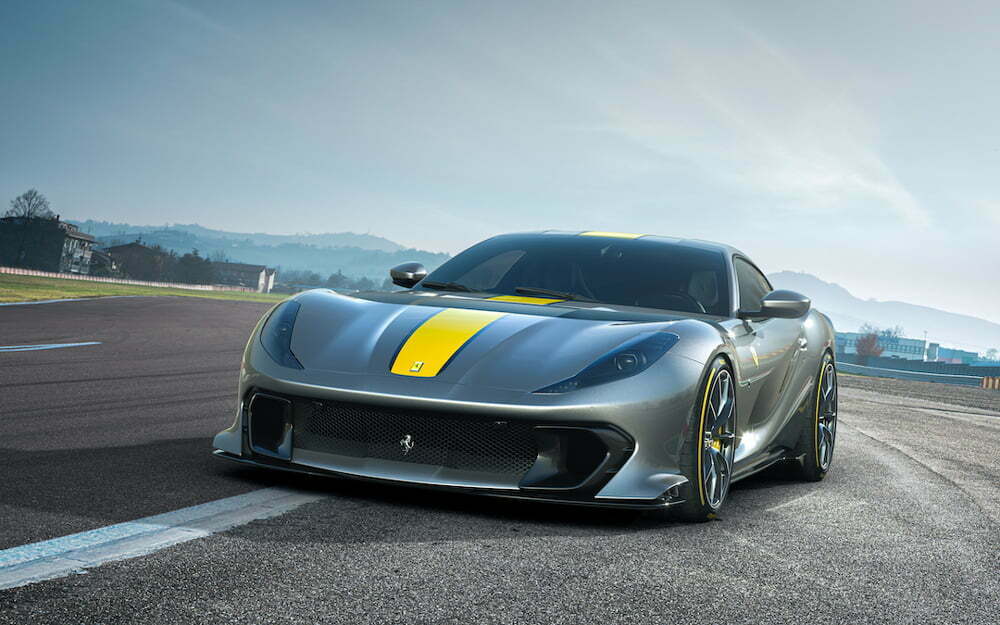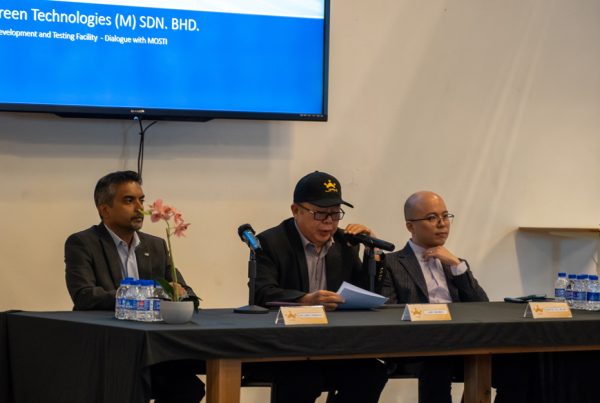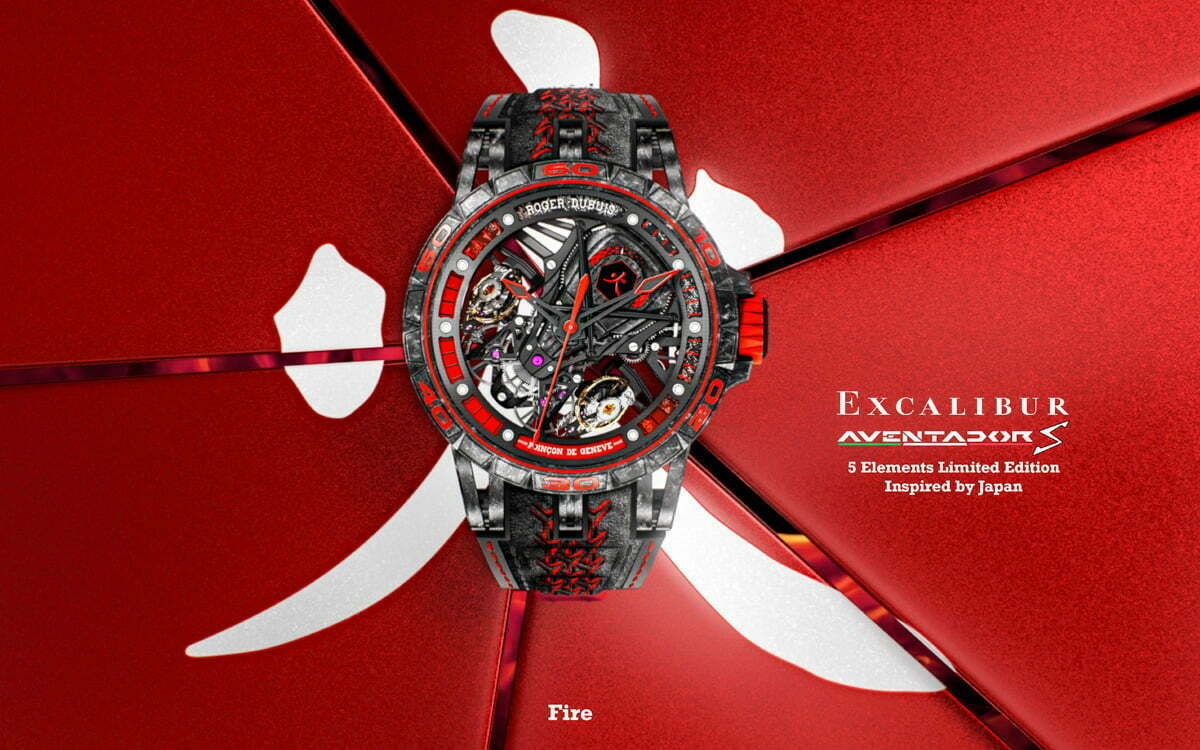
Resident Contributor Andre Lam Samples The 812 Competizione At Fiorano
It is clear Ferrari has not been sitting still during this pandemic, introducing a few key models this year alone. The highlight for 2021 has to be the Ferrari 812 Competizione. It has had a fairly long gestation period of four years but it is clear a lot of work has gone into the 812 Competizione.
On top of their to-do list is its most important feature, the naturally aspirated 6.5-litre V12. It is certainly not merely a tweaked version of the 800 PS motor of the 812 Superfast as Ferrari took the effort bringing us around the engine foundry to show us the actual manufacturing process of the 812 Competizione engine.
Two new important numbers to take note of. First 9,500 – that is the max rpm that this 6.5-litre V12 can spin up to and it is a record for a V12 production engine. The second is 830, which is the peak power of this engine, an increase of 30 PS over the 812 Superfast. They could have done 10,000 rpm but in the end, reliability and longevity were of paramount importance.
The re-engineering begins with a pair of new cylinder heads featuring DLC (diamond-like coating) finger-slider actuators from F1 technology instead of the direct-acting tappets, as this design can deliver more rapid and deeper valve actuation than what tappets offer. The cams which also have DLC, actuate lighter valves using a different cam profile to enhance airflow at high revs.
The DLC-coated pistons and titanium conrods are both lighter and stronger to endure the stresses of living with a 9,500 rpm limit. Most importantly the new forged ultra high strength steel flat-plane crankshaft is finely balanced and is three percent lighter so that it could deliver all that power while spinning at 9500 rpm.
Quicker shifts are achieved by a recalibration of the control strategies resulting in shift times dropping a further 5 percent. It retains the same gear ratios as the 812 Superfast, but thanks to the new rev limit the drivetrain hangs on to each of the lower, harder accelerating gears a little longer, while multiplying the additional punch of this new engine.
Most of Ferrari’s competitors when making a hardcore version seem to favour large wings, ducts, scoops and deep spoilers. Well under the stewardship of Ferrari design maestro Flavio Manzoni, the 812 Competizione will not have any wings or flicks because the design brief is, that the 812 Competizione must maintain an air of elegance despite the need for visual aggression and significantly more aerodynamic downforce along with minimal impact on drag.
To generate 80 kg of downforce more than the 812 Superfast without wings is a difficult task but not an impossible one. The real key to the additional downforce lies with the underside where the aerodynamicists have developed a really huge rear diffuser and new airflow strategies to gain downforce without impacting aerodynamic drag. And because they refuse to resort to huge wings and such, they needed to be very smart about the top, visible surfaces.
On closer inspection, one will notice the well-integrated scoops and ducts in the front spoiler/bumper. They provide the cooling of the powerful engine yet airflow is also redirected through paths just under the skin to emerge at strategic points on the body like its transverse blade feature such that ducted air merges seamlessly into the airstream maintaining laminar flow over the front bodywork.
At the rear, the 812 gets a highly unusual solution. There is no rear windscreen. In its place is a solid, body-coloured carbon fibre panel that features three pairs of vortex generators to deflect and spread airflow over the entire width of the rear Kamm tail spoiler such that downforce is improved by 10 percent. But how does one see out the back? Ferrari has opted for a high-definition camera and display to replace the rearview mirror.
Even the trio of visually striking slats just behind the rear wheel arches have a combined duty to generate downforce yet evacuate the excess pressure within the wheel arch that would otherwise cause a few kg of lift at very high speeds. A similar duct bleeds high pressure away from the front wheel arch and discharges it to low-pressure area along the doors.
We were also shown the 812 Competizione Aperta, the Targa or open-top version and it has a very different styling treatment especially the upper bodywork. There is now a removable carbon fibre roof with its own storage space in the boot. When attached, it has a central trough that directs air through what looks like a wing but is ever so well integrated into the bodywork, that it does away with the coupe’s rear windscreen solution.
As only one journalist is allowed out at a time at Fiorano, after a long wait, it is finally my turn. We were given four laps to familiarise ourselves following a pace car driven by one of Ferrari’s test drivers and another four hot laps following that. Except it begins to rain after the familiarisation laps.
Disappointing at first but it turns out to have a silver lining because, in the dry, the grip of the Pirelli Corsa tyres is so immense that it is hard to see where your skill ends and where the machine and its electronics are taking over. It operates so seamlessly to flatter the driver.
It is really no joke to pilot an 830 PS rear-wheel drive super sportscar at full tilt around a race track. Without the newfangled hardware like the new independent rear-wheel steer system and governing electronics from the SSC 7.0 (side slip control) stability system, 400 PS would be the maximum power a purely mechanical RWD (without electronics) set up can safely handle. It beggars belief that we can drive with 830 PS and live to tell the tale.
What Ferrari set out to do with the 812 Competizione is give its clients the possibility to use more of the entire 830 PS. Make no mistake while one can access more of the potential performance, this 812 Competizione is still a beast that commands respect but it is less spiky than the F12 TDF that came before it.
The first rain on the track is the worst and I am still in race mode. I cannot hear much of what the pace car driver is telling me because this 9,500 rpm screaming engine is as loud inside as it is outside. I was just trying my hardest to keep pace with what must be a walk in the park for the Ferrari test driver in the other 812 Competizione that was gradually pulling away from me.
I can now appreciate the difference between being one in the audience of an orchestra and being one in the orchestra. Both are intoxicating but there is a shockwave emanating from the back as the 812 Competizione blasts past that is not heard from within the cabin. Admittedly it is a little hard to appreciate the nuances of the soundtrack while trying one’s best not to stuff it and keeping pace with the lead car at the same time.
As the rain reduces the available grip, I now get a better sense of how the clever electronics curate the drive experience. As I used race mode on most of my laps, I can see just how brutal the power of this car is, easily breaking traction at a mere prod of the throttle. Containing all this fury takes an immense effort. Many times the car was sideways and mind you, it’s not while I am taking a corner. Under these circumstances, one can observe the stability system trying to wrest things under control.
There are many layers of control under the command of the SSC 7.0. Apart from the traction control, brake actuation, Magna-ride suspension and e-differential, Ferrari adds a rear-wheel steer system that for the first time is no longer a synchronous type activation. It can now steer left and right rear wheels independently.
When does this come into play? The best situation it seems is during high-speed cornering when two corners are linked together without a straight portion in between. This rapid change of direction is unsettling because the rear wheels are loaded for one corner and needs to quickly switch to the other direction. What the system does is shift the lightly loaded wheel to toe-in as the load transfers over to the other side as the car changes direction. This gives the driver more confidence as the transition is more stable.
Ferrari deploys its rear-steer system primarily to generate a virtual shortening of the wheelbase, to tightly couple front response to rear reaction making it feel all of one piece so that the car responds crisply as a whole. It does provide some counter-steer at below 5 km/h to help during parking but it is small. It can also provide toe-in during braking and toe-out for acceleration to counter these deflecting forces.
We got lucky having a smaller group as our hosts graciously allowed another three hot laps at the end of the official sessions. This time I am determined to use the wet and sport modes in the rain. Wet mode is the most effective in curtailing untoward handling behaviour from too much exuberance on the part of the driver. On wet roads away from the track, Wet mode is highly recommended. But at the track it isn’t much fun, curtailing any untoward reactions even before it is evident to the driver.
Sport is a bit more fun allowing the occasional slip and slide. Despite the rain, it allowed me to keep pace with the pace car quite easily as I spent more time on the racing line than in Race mode where I wasted a considerable amount of time scaring myself and correcting the skids. I am not sure if I would recommend using Sport mode in the pouring rain on the street but it did prove useful at the track.
On a cool dry day, Ferrari says their test driver can lap Fiorano in 1 min 20 seconds. This is 1.5 seconds faster than the 812 Superfast and a whole second faster than the F12tdf. That does not sound like much but it requires their professional driver to drive those cars exactly through the very narrow band of each cars’ peak performance. Lesser drivers would not be able to find that tricky sweet spot. But the 812 Competizione has a far more user-friendly engagement allowing the driver to enjoy much of what the car can do. It still does not mean it automatically confers any driver with the skill to lap Fiorano anywhere near 1 minute 20 seconds.
It is hard to say how long or in what form the fabulous V12 will need to take on in the future, but for sure it will not be as a standalone, naturally aspirated engine. But looking at what has happened to Ferrari’s V8, we know that the famous Ferrari wail will be gone if it goes the way of turbocharging. A hybrid solution might keep the natural aspiration but that is mere speculation. So it’s no wonder that despite the pandemic the entire allocation of 999 812 Competizione coupes and 599 Aperta versions have been snapped up, sight unseen. I think we might have just witnessed the closing chapter of a golden era in motoring.
- – Car: Ferrari 812 Competizione
- – Engine: 6496cc V12 Natural Aspiration
- – Transmission: 7-Speed F1 DCT
- – Power: 830 PS at 9250 rpm
- – Torque: 692 Nm at 7000 rpm
- – Compression ratio: 13.5:1
- – 0-100 km/h: 2.85 seconds
- – Top Speed: over 340 km/h
Visuals: Roberto Carrer










































